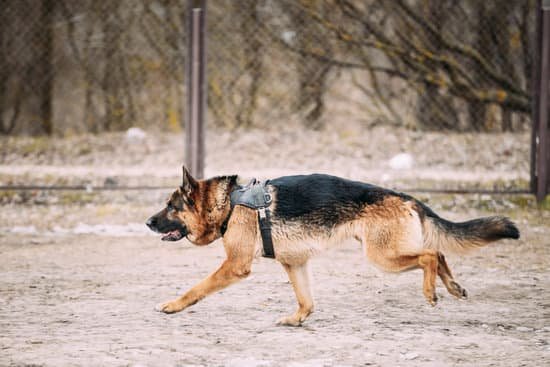Are you passionate about working with dogs and interested in pursuing a career as a professional trainer? If so, understanding how to become an accredited dog trainer is crucial for establishing credibility and expertise in the field. Accreditation serves as a marker of quality and proficiency, giving clients confidence in your abilities to effectively train their beloved pets.
To kickstart your journey towards becoming an accredited dog trainer, it is essential to research accredited training programs that meet industry standards. These programs provide comprehensive education and hands-on experience to equip you with the necessary skills to excel in the field. Acquiring the right educational background and relevant experience is key to fulfilling accreditation requirements, ensuring that you are well-prepared for the role.
In addition to meeting educational prerequisites, selecting the right accredited training program is vital for your success as a dog trainer. Factors such as curriculum content, instructor qualifications, and program reputation should be considered when choosing where to pursue your accreditation. By carefully evaluating these aspects, you can make an informed decision that aligns with your goals and sets you up for a successful career in dog training.
Setting the Foundation
Types of Accredited Dog Training Programs
There are a variety of accredited dog training programs available for aspiring dog trainers to choose from. These can range from online courses to in-person classes and workshops. It is essential to research each program thoroughly to determine which one aligns best with your learning style, schedule, and career goals. Some programs may focus on specific training techniques or methods, while others offer a more general curriculum covering various aspects of dog training.
Accreditation Organizations
When researching accredited dog training programs, it is crucial to consider the accreditation organizations behind them. Look for programs that are recognized by reputable associations such as the Certification Council for Professional Dog Trainers (CCPDT) or the International Association of Animal Behavior Consultants (IAABC). These accreditation organizations set standards for education and experience requirements, ensuring that you receive quality training in the field of dog behavior and obedience.
Reviews and Recommendations
In addition to checking accreditation status, reading reviews and seeking recommendations from professional dog trainers can provide valuable insights into the quality of a program. Look for testimonials from alumni who have successfully completed the program and are now working as accredited dog trainers.
Their feedback can give you a better idea of what to expect in terms of curriculum, hands-on training opportunities, and overall experience. By taking these factors into consideration, you can make an informed decision when selecting a program on how to become an accredited dog trainer.
Meeting the Requirements
In order to become an accredited dog trainer, there are certain educational requirements and experience needed to ensure that you are well-prepared for the responsibilities that come with the profession. While formal education is not always mandatory, having a strong foundation in animal behavior, learning theory, and basic training techniques can greatly benefit aspiring dog trainers. Pursuing courses in psychology, animal science, or ethology can provide valuable insights into understanding canine behavior.
Additionally, gaining hands-on experience working with dogs is crucial to becoming a successful accredited dog trainer. Volunteer at local shelters, intern at dog training facilities, or even offer your services to friends and family members with dogs. This practical experience allows you to apply theoretical knowledge in real-life situations, honing your skills and developing your own training style. Many accredited programs require a minimum number of hours of hands-on experience before granting certification.
Furthermore, some accreditation programs may have specific requirements regarding educational background and experience levels. It is essential to thoroughly research different accreditation bodies and their respective criteria to determine which program aligns best with your goals and qualifications. By understanding what is expected from accredited dog trainers, you can tailor your educational and professional journey accordingly to meet those standards effectively.
| Benefits of Hands-on Experience | Importance of Researching Accreditation Bodies |
|---|---|
| Allows application of theoretical knowledge | Ensures alignment with program criteria |
| Helps develop personal training style | Provides clarity on expectations for trainers |
| Required by many accredited programs | Facilitates tailored educational journey |
Choosing the Right Program
When embarking on the journey to become an accredited dog trainer, one of the most crucial steps is selecting the right training program. With numerous options available, it is essential to consider several factors before making a decision.
First and foremost, aspiring trainers should research and ensure that the program they choose is accredited by reputable organizations in the field of dog training. Accreditation from these organizations not only validates the quality of education provided but also enhances credibility in the eyes of potential clients.
In addition to accreditation, individuals should also consider the curriculum offered by the training program. A well-rounded curriculum should cover topics such as canine behavior, learning theory, training techniques, and communication skills. Practical hands-on experience under the guidance of experienced trainers is also invaluable in preparing aspiring dog trainers for real-world scenarios. Furthermore, programs that offer opportunities for specialization in areas like therapy dog training or service dog training can provide a competitive edge in the industry.
Another important factor to consider when choosing an accredited dog training program is the flexibility and convenience of the learning format. Some programs may offer online courses, while others may require in-person attendance. Prospective students should assess their learning preferences and lifestyle commitments to determine which format best suits their needs.
Additionally, factors such as program costs, location, and duration should be taken into account when making a decision. By carefully evaluating these considerations, aspiring dog trainers can select a program that aligns with their goals and sets them on the path towards becoming successful professionals in the field.
| Factors to Consider | Information |
|---|---|
| Accreditation | Validate quality and enhance credibility |
| Curriculum | Coverage of key topics and practical experience |
| Learning Format | Online vs. in-person courses and flexibility |
Getting Hands-On
Internship Opportunities
One of the most crucial steps in becoming an accredited dog trainer is gaining practical training and experience. Many accredited training programs offer internship opportunities where aspiring trainers can work alongside experienced professionals. These hands-on experiences allow individuals to observe, practice, and refine their techniques in a real-world setting. By working directly with dogs and their owners, future trainers can develop essential skills in behavior modification, obedience training, and client communication.
Volunteering at Shelters or Rescues
Another valuable way to gain practical training and experience as a dog trainer is by volunteering at animal shelters or rescue organizations. This hands-on opportunity not only allows individuals to work with a variety of dogs but also helps them understand different behaviors and temperaments. Volunteering provides aspiring trainers with the chance to apply their knowledge from accredited programs in real-life situations while making a positive impact on the lives of shelter animals.
Creating a Portfolio
Aspiring dog trainers can further solidify their practical training and experience by creating a portfolio showcasing their work. This could include before-and-after videos of training sessions, testimonials from satisfied clients, and examples of successful behavior modification techniques used.
A well-documented portfolio not only serves as evidence of practical experience but also demonstrates expertise and professionalism to potential clients or employers. By actively seeking out opportunities for hands-on training, individuals can enhance their skills and increase their credibility as they work towards becoming an accredited dog trainer.
Passing the Test
Successfully completing accreditation exams is a crucial step towards becoming an accredited dog trainer. These exams are designed to assess your knowledge, skills, and ability to effectively train dogs. To ensure that you pass these exams with flying colors, here are some tips on how to prepare:
- Study diligently: Take the time to review all the material covered in your accredited training program. Make use of study guides, practice exams, and other resources to help reinforce your understanding of important concepts.
- Practice hands-on skills: In addition to theoretical knowledge, accreditation exams often test your practical training skills. Spend time working with dogs to sharpen your abilities in obedience training, behavior modification, and communication.
- Seek guidance from mentors: If possible, connect with experienced dog trainers who have already passed the accreditation exams. They can provide valuable insights and tips on how to approach the exam format and content.
It’s also important to familiarize yourself with the format of the accreditation exams, including the types of questions that may be asked and the time constraints involved. By being well-prepared and confident in your abilities, you can increase your chances of passing the test and achieving your goal of becoming an accredited dog trainer.
Building Your Reputation
As a certified and accredited dog trainer, building your reputation within the industry is essential for success. Networking with other professionals, attending continuing education courses, and staying up-to-date on the latest training techniques are all crucial aspects of maintaining your credibility as a skilled trainer. Here are some tips on how to effectively build your reputation in the field:
- Join professional organizations: Becoming a member of associations such as the Association of Professional Dog Trainers (APDT) or the Certification Council for Professional Dog Trainers (CCPDT) can provide you with networking opportunities, access to resources, and ongoing support from other experienced trainers.
- Attend workshops and seminars: Continuing education is key to staying current in the field of dog training. By attending workshops, seminars, and conferences, you can learn new methods, gain valuable insights, and expand your skill set.
- Collaborate with other professionals: Working with veterinarians, animal behaviorists, and other pet-related professionals can help you establish credibility and expand your network. Building relationships with others in the industry can lead to referrals and partnerships that benefit both parties.
Networking and continuing education go hand in hand when it comes to solidifying your reputation as an accredited dog trainer. By actively engaging with other professionals in the field, seeking out educational opportunities, and continuously refining your skills, you can enhance your expertise and become a respected member of the dog training community.
Remember that building a successful career as an accredited dog trainer is not just about acquiring knowledge-it’s also about demonstrating professionalism, integrity, and a genuine passion for working with dogs. By investing in both your education and your relationships within the industry, you can position yourself as a trusted expert who is dedicated to helping dogs live their best lives through positive training methods.
Maintaining Accreditation
Once you have become an accredited dog trainer, it is essential to understand the importance of maintaining your accreditation through continuing education and fulfilling renewal requirements. Continuing education allows you to stay updated on the latest training techniques, behavioral studies, and industry trends, ensuring that you provide high-quality services to your clients and their furry companions. By participating in continuing education programs, workshops, seminars, and conferences, you can expand your knowledge and skill set as a professional dog trainer.
Renewal requirements for accreditation typically involve completing a certain number of hours of continuing education within a specific time frame. It is important to carefully review the renewal guidelines provided by the accrediting organization that granted you your certification.
Failure to meet renewal requirements could result in the loss of your accreditation status, affecting your credibility as a dog trainer. By staying proactive and organized with your continuing education efforts, you can ensure that you maintain your accreditation and continue to grow in your career.
Networking with other accredited dog trainers can also provide valuable opportunities for continuing education and professional development. Joining professional organizations, attending industry events, and connecting with experienced trainers can help you stay informed about best practices in the field.
Additionally, seeking mentorship from seasoned professionals can offer guidance and support as you navigate the challenges and rewards of being an accredited dog trainer. By actively engaging in ongoing learning experiences and networking opportunities, you can strengthen your skills, expand your knowledge base, and enhance your reputation as a trusted and skilled professional in the world of dog training.
Conclusion
Becoming an accredited dog trainer is not just a profession; it is a commitment to excellence and continuous learning in the field of canine behavior and training. By following the steps outlined in this guide, you can lay down a solid foundation for your career as a successful accredited dog trainer.
Researching accredited dog training programs, meeting the educational and experience requirements, choosing the right program, getting hands-on practical training, passing accreditation exams, networking, and pursuing continuing education are all essential steps on this journey.
After completing an accredited dog training program and passing the necessary exams, you will officially become a certified professional in your field. However, the journey does not end there.
Building your reputation as a competent and reliable dog trainer requires ongoing dedication to networking with other professionals in the industry and staying updated on the latest trends and techniques in dog training. By continuously seeking out opportunities for growth and improvement, you can solidify your position as a trusted expert in the field.
As you embark on your career as an accredited dog trainer, remember that maintaining your accreditation requires diligence and commitment. Continuing education and renewal requirements are designed to ensure that you stay current with best practices in dog training and behavior modification.
By fulfilling these obligations, you demonstrate your dedication to providing high-quality services to clients and their beloved pets. With perseverance, passion, and a genuine love for dogs, you can turn your dream of becoming an accredited dog trainer into a rewarding reality.
Frequently Asked Questions
What Is the Highest Rated Dog Training Certification?
The highest rated dog training certification is typically considered to be the Certification Council for Professional Dog Trainers (CCPDT). This certification is well-respected in the industry and demonstrates a high level of knowledge and skill in dog training.
Is a Dog Training Certificate Worth It?
Obtaining a dog training certificate can definitely be worth it for those looking to pursue a career in dog training. Certification can help establish credibility, attract more clients, and potentially lead to higher earnings. It also shows a commitment to continuing education and staying up-to-date on industry best practices.
How Do I Become a Professional Dog Trainer in USA?
To become a professional dog trainer in the USA, there are several steps you can take. First, gain experience working with dogs through volunteering, internships, or entry-level positions.
Next, consider pursuing formal education in animal behavior or dog training through courses or workshops. Finally, obtain certification from reputable organizations such as the CCPDT to further demonstrate your expertise and dedication to the field of dog training.

Welcome to the blog! I am a professional dog trainer and have been working with dogs for many years. In this blog, I will be discussing various topics related to dog training, including tips, tricks, and advice. I hope you find this information helpful and informative. Thanks for reading!





